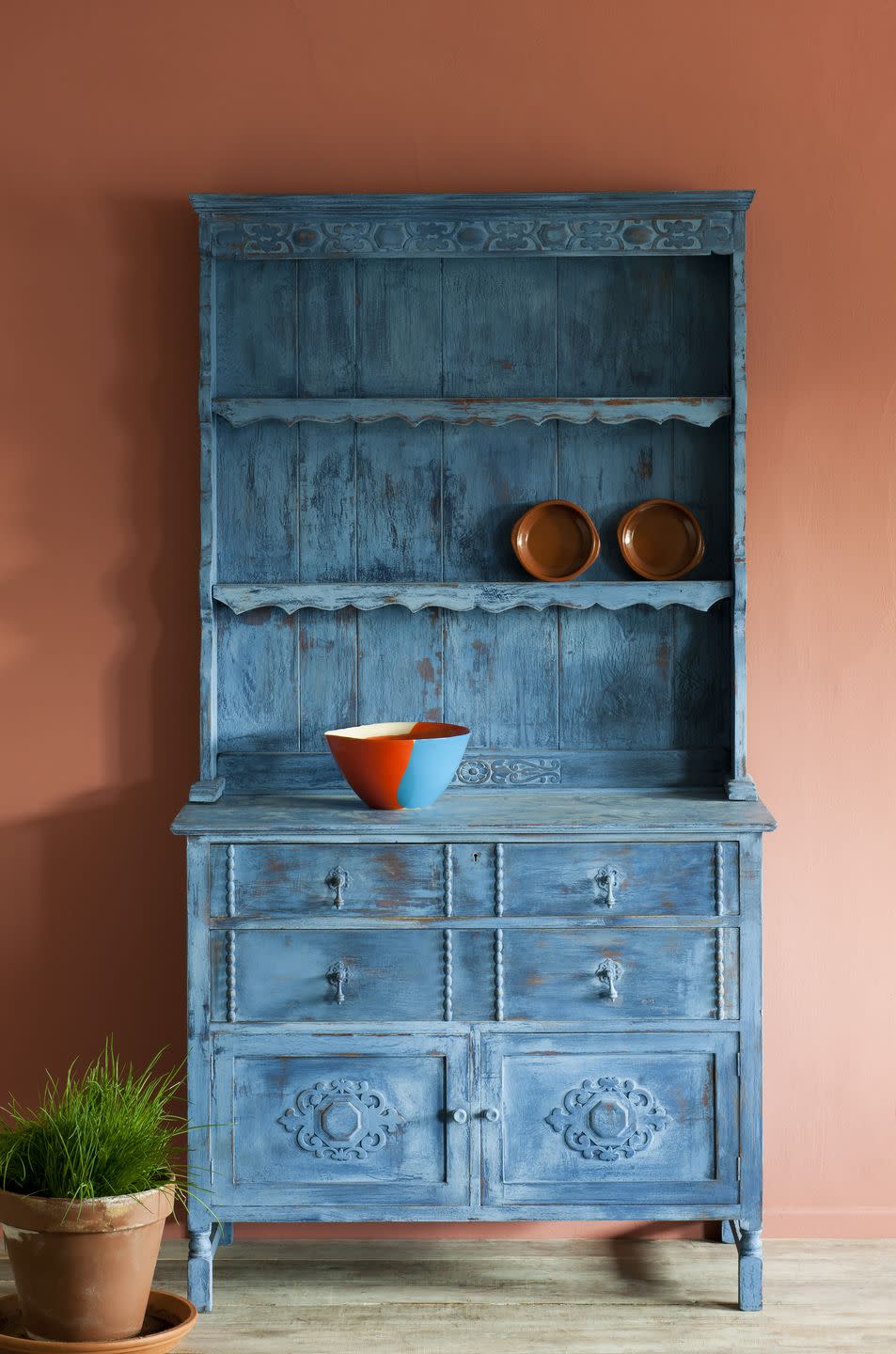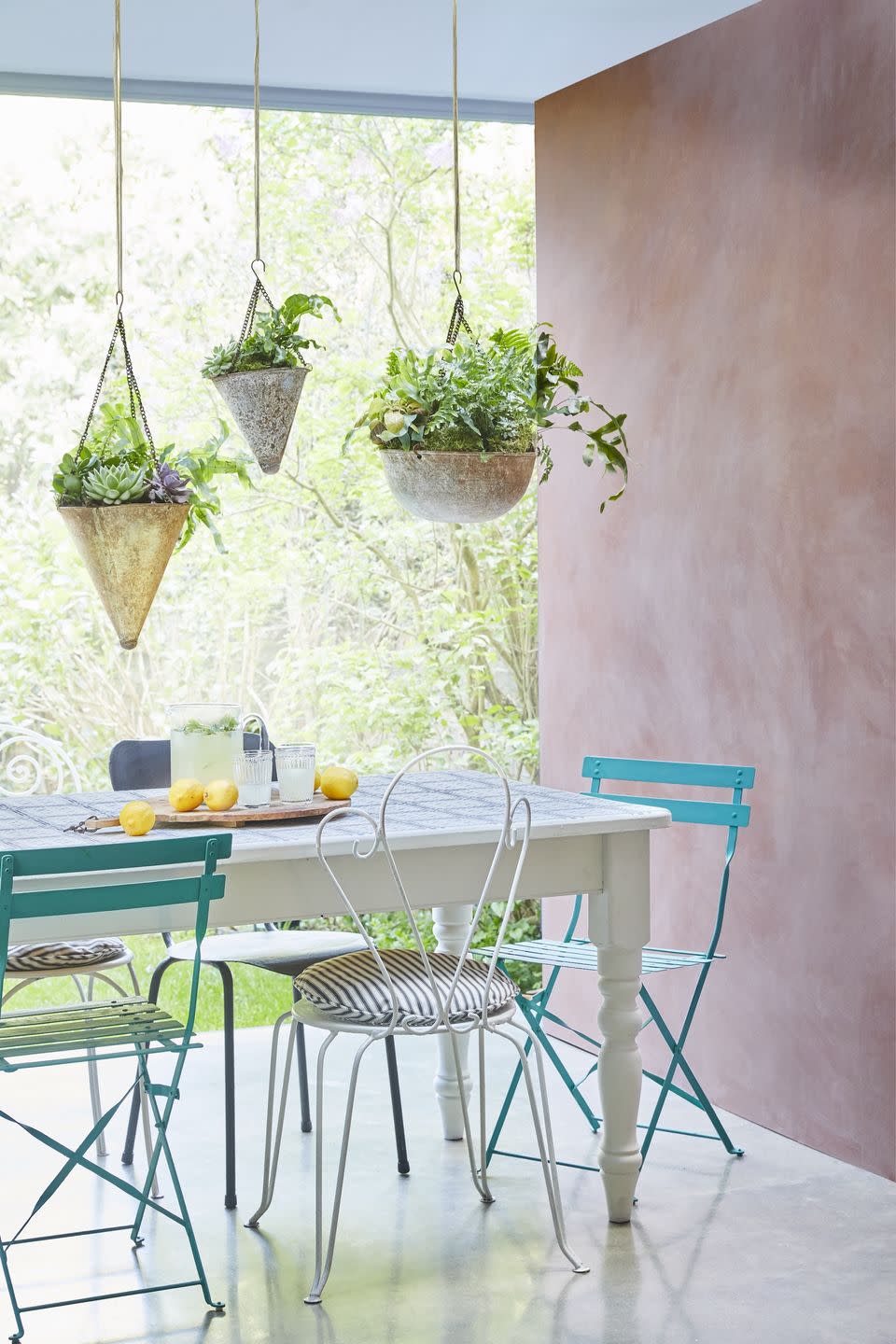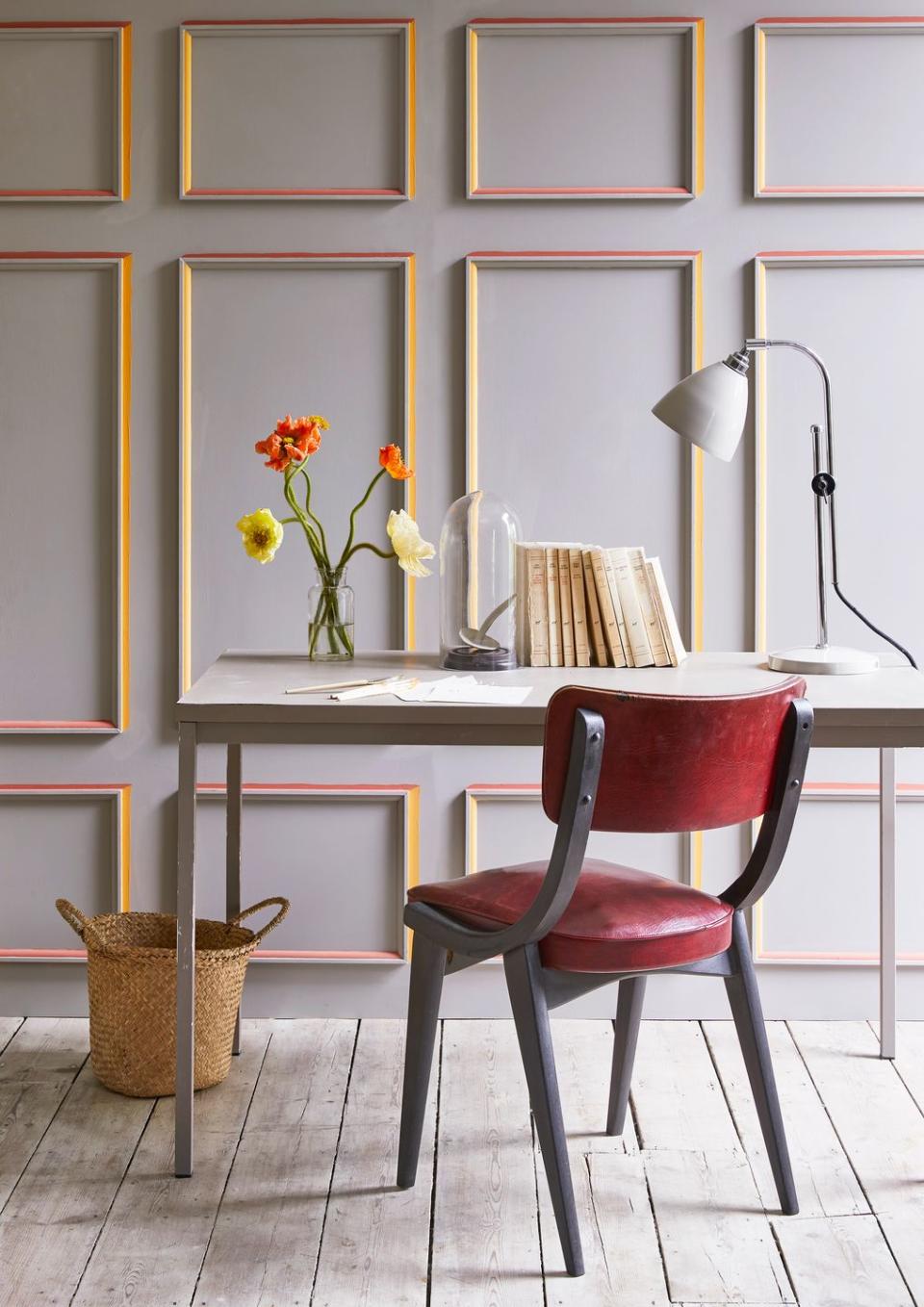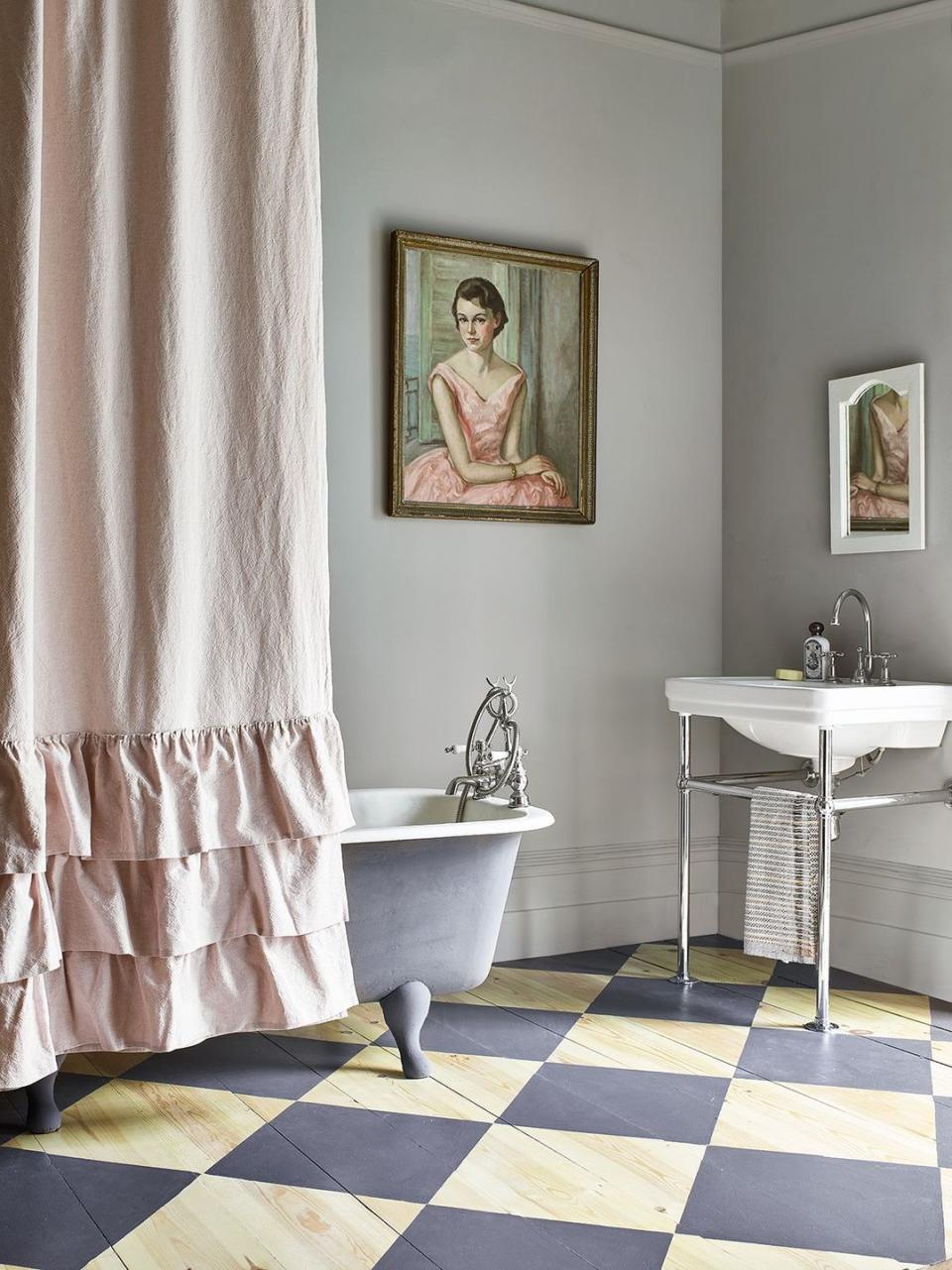Here's the Best Way to Chalk Paint Furniture, From the Inventor Herself

“Hearst Magazines and Verizon Media may earn commission or revenue on some items through the links below.”
Annie Sloan has a best friend, and they're pretty different from most. She describes them as being beautiful, forgiving, and quick, which are sterling adjectives anyone would want to be attributed to them. But her best friend isn't a person... In fact, it’s something she created herself: Chalk Paint.
"I needed an easy solution for upcycling furniture because I was working full-time and raising three young sons and there just wasn’t anything out there," she says. "I’d describe it as my best friend, to be quite honest. Over the years it’s saved me time and money by not living with ugly furniture!"

Since chalk paint debuted in 1990, it's been a pal to innumerable DIYers who aim to refresh an aspect of their homes, particularly furniture, without often needing to accomplish the extra tasks of priming or sanding first. Its matte finish, which gives Chalk Paint its name, comes in a kaleidoscope of colors that are as neutral as white and beige, as on-trend as "Scandinavian Pink," and as bold as lime green and bright orange.
"There's no right or wrong with Chalk Paint," she says. "It's quick to dry and easy to paint over if you aren’t happy with how your finished pieces look."
On the subject of furniture, Sloan recommends her product for almost any item. She does note that it looks best on those made with pine—especially kitchen cabinets, for instance—or other woods that have seen some wear and tear. Here's what you need to know before you pick up a paintbrush.

How to Chalk Paint Furniture, Step by Step:
1. Choose your paint selection IRL.
"I would urge people to visit their local Annie Sloan Stockist so that they can see exactly what Chalk Paint colors look like, rather than trying to decide by looking online," Sloan notes. "They are all highly trained in my painting method, too."
2. Some maintenance may be required.
"While no prep is required for most furniture pieces, there are a couple of notable exceptions," Sloan says. "If you’re painting metal, melamine, or another very glossy surface that paint would struggle to adhere to, then you should key the surface with some light sanding. You can also dilute Chalk Paint and layer it on in thin coats to build up coverage slowly."
3. Test it out.
"Every piece of furniture is different, so my golden rule is to always test Chalk Paint® on a discrete area," she says. "Virtually every Chalk Paint dilemma can be foreseen and then avoided by doing a quick patch test first. If you see any bleed-through—which sometimes occurs with furniture from the 1920s, or furniture that might have come into contact with nefarious chemical substances— then seal the whole piece of furniture with shellac or my Chalk Paint Lacquer."

How to Paint with It:
1. Brush on diluted coats.
"To create a smooth, modern finish, I recommend applying two or three slightly diluted coats of paint with a flat brush," Sloan adds. "Dilute the Chalk Paint at a 10 percent ratio to start, then continue to add water if necessary. If you prefer a textured finish, load up an Annie Sloan Chalk Paintbrush, which is specially designed to hold lots of paint, and apply in lots of different directions. The paint will go on thick, and you’ll see brush strokes in the finish. Two coats in this style will be sufficient.
"Generally, two or three coats is usually more than enough for most furniture, but the notable exception is 'Pure' Chalk Paint. Pure is made without any pigment to ensure it’s the whitest, brightest, cleanest white it can possibly be. Because of this, coverage of Pure needs more coats than all of the other colors. My tip is to use Country Grey as a primer first, but you can use any light-colored Chalk Paint® you may have around."
2. Leave it out to dry.
"Drying times vary depending on how much Chalk Paint you use, the temperature of the room in which you’re painting, and lots of other environmental factors,” she says. “Generally though, two hours will be sufficient. If in doubt, touch the furniture with a finger to confirm."
3. Apply a wax.
"I usually Chalk Paint in the mornings and then apply a wax in the afternoons. The waxing process is what protects and finishes your Chalk Paint," Sloan notes. "To get the most from waxing, use my wax brushes or a lint-free cloth—it needs to be 'lint-free,' otherwise you’ll get little bits of material in the finish. I find old cotton t-shirts are ideal. Use the wax sparingly, in one patch at a time, working it well into the paint. Remove any excess with a clean cloth.
"For a shiny finish, leave it to cure overnight and then buff it into a high sheen. Lastly, if you’re painting garden furniture, substitute Chalk Paint Wax for Chalk Paint Lacquer, which contains UV protection to keep colors fresh and vibrant."
Three Ways to Use Chalk Paint:
Accentuate Molding and Wainscoting

Have fun with paneling by color-blocking. Here, wainscoting is accentuated with Chalk Paint by Annie Sloan in Paris Grey on the base and Scandinavian Pink and Arles for the molding detailing.
Paint Faux Floor Tiles

Use Chalk Paint to create a classic checkerboard effect to give your floors a new look without actually having to retile. Apply tape to create clean lines and map it out your pattern before you start. These old wooden floorboards were revived with Chalk Paint® in Old Violet and finished with Chalk Paint Lacquer to seal and protect the floors. The bathtub was also treated with Old Violet for a cohesive look.
Give Old Furniture a Second Life

Take a cue from Annie herself and give an antique sofa, chair, bed frame, or really any piece of furniture with a frame, the gold treatment with Chalk Paint. This frame was painted in Emperor’s Silk, then sanded over once dried with a fine sanding pad. Next, it was covered in Gold Size, a special type of adhesive for gilding, and then covered in Imitation Gold Loose Leaf for a gilded effect.
Want more design ideas? Become a House Beautiful: All Access member now!
Follow House Beautiful on Instagram.
You Might Also Like

